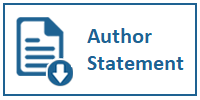Usability Evaluation of Ticket Purchasing Applications, Case Study Public Railways in Indonesia
DOI:
https://doi.org/10.31937/si.v15i1.3566Abstract
This study aims to evaluate the usability of a mobile-based application used to facilitate passengers in purchasing train tickets, the Access by KAI application. As an application widely used by the public, the usability evaluation is essential. The evaluation was conducted by measuring usability in three aspects: effectiveness, efficiency, and user satisfaction. The measurement involved 10 respondents who actively use the application. They performed the experiment at the usability laboratory. The level of effectiveness and efficiency was measured using task analysis, analyzing the final results of each respondent after performing five predetermined tasks. The results show that the effectiveness and efficiency of the application are good. However, the measurement of user satisfaction aspect using the SUS (System Usability Scale) method indicates less favorable results. This obviously results in poor user experience (UX) for users. Therefore, the practical implication of this study is the need for improvements to the application, both in the user interface (UI) and existing business processes, to enhance the user experience.
Downloads
Downloads
Published
How to Cite
Issue
Section
License
Authors retain copyright and grant the journal right of first publication with the work simultaneously licensed under a Creative Commons Attribution-ShareAlike International License (CC-BY-SA 4.0) that allows others to share the work with an acknowledgement of the work's authorship and initial publication in this journal.
Authors are able to enter into separate, additional contractual arrangements for the non-exclusive distribution of the journal's published version of the work (e.g., post it to an institutional repository or publish it in a book), with an acknowledgement of its initial publication in this journal.
Copyright without Restrictions
The journal allows the author(s) to hold the copyright without restrictions and will retain publishing rights without restrictions.
The submitted papers are assumed to contain no proprietary material unprotected by patent or patent application; responsibility for technical content and for protection of proprietary material rests solely with the author(s) and their organizations and is not the responsibility of the ULTIMA InfoSys or its Editorial Staff. The main (first/corresponding) author is responsible for ensuring that the article has been seen and approved by all the other authors. It is the responsibility of the author to obtain all necessary copyright release permissions for the use of any copyrighted materials in the manuscript prior to the submission.















